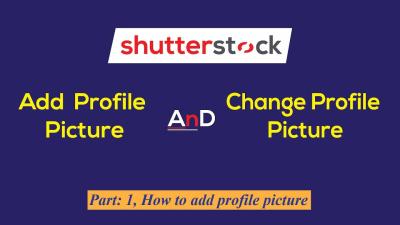Shutterstock has become one of the go-to platforms for high-quality stock images, videos, and music. With millions of assets available, it’s a favorite among marketers, designers, and content creators worldwide. Its user-friendly interface, extensive library, and flexible licensing options make it a top choice for many. However, while Shutterstock offers impressive resources, it also comes with a price tag that might not suit everyone—especially those working on a tight budget or needing large quantities of media regularly. That’s where exploring more affordable alternatives can be a game-changer, helping you access quality content without breaking the bank.
Why Consider Alternatives to Shutterstock

There are several compelling reasons to look beyond Shutterstock when searching for media assets. First and foremost, cost is a big factor. Shutterstock’s subscription plans and image packs can add up quickly, especially for small businesses, freelancers, or hobbyists. If you’re producing content on a budget, more affordable platforms can offer similar quality assets at a fraction of the price.
Another reason is diversity of options. While Shutterstock boasts an extensive collection, some niche platforms or newer sites might have specialized or more unique content that better fits your specific needs. Additionally, some platforms offer more flexible licensing terms, making it easier and safer to use their media across various projects.
Furthermore, accessibility and user experience matter. Certain alternative platforms are designed with simplicity in mind, making it easier for beginners to find what they need quickly. Some also offer free assets or generous free trial periods, so you can test the waters without any upfront investment.
Finally, supporting smaller or independent media providers can be a more ethical choice, especially if those platforms focus on diverse, inclusive, or community-driven content. Choosing alternatives that align with your values can add an extra layer of satisfaction to your creative process.
3. Top Competitors Offering Affordable Media Content
If you’re on the hunt for media platforms that won’t break the bank but still deliver quality images, videos, and graphics, you’re in luck. There are several excellent alternatives to Shutterstock that cater to budget-conscious creators, small businesses, and startups. Let’s dive into some of the top competitors making waves in the affordable media space.
Adobe Stock is a popular choice for creatives already within the Adobe ecosystem. While it offers premium content, they also have flexible plans that can be quite affordable, especially if you’re already paying for Adobe Creative Cloud. Their collection is vast, and the quality is top-notch.
Pexels and Pixabay are fantastic free options, but they also offer premium plans for access to even more exclusive content. These platforms are perfect if you’re just starting out or need media quickly without a hefty price tag.
Depositphotos has been gaining popularity for its affordable subscription plans and pay-per-download options. They have a large library of images, vectors, and videos at prices that are friendly for small projects.
Canva Pro isn’t just a design tool; it also provides access to a vast library of photos, videos, and templates. Its subscription plans are very budget-friendly, especially if you’re creating social media graphics or marketing materials regularly.
Other notable mentions include:
- Dreamstime – Offers flexible plans and a wide variety of media.
- 123RF – Known for affordable pricing and a large media library.
- Bigstock – Simple and straightforward subscription options for small-scale needs.
All these platforms provide a range of pricing plans, so you can pick what fits your budget while still getting quality media content. The key is to compare their offerings to find the best value for your specific needs.
4. Features and Pricing Compared Across Platforms
When choosing an affordable media platform, it’s essential to look at both the features they offer and how their pricing stacks up. Let’s break down some of the most popular options to see how they compare.
| Platform | Key Features | Pricing Highlights | Best For |
|---|---|---|---|
| Adobe Stock |
|
|
Professional creatives, Adobe users |
| Pexels & Pixabay |
|
|
Beginners, small businesses, bloggers |
| Depositphotos |
|
|
Small businesses, marketers |
| Canva Pro |
|
|
Social media managers, small teams |
As you can see, prices vary but generally remain affordable, especially with the flexibility of subscription or pay-per-use models. Features like seamless integration, extensive libraries, and easy-to-use interfaces make these platforms strong contenders. Consider what’s most important for your projects—whether it’s budget, library size, or specific tools—and choose accordingly. Remember, sometimes a smaller investment in the right platform can save you time and stress in the long run!
5. Benefits of Using Alternative Media Platforms
Switching things up and exploring alternative media platforms to Shutterstock can bring a bunch of advantages — whether you’re a blogger, small business owner, or creative professional. Let’s dive into some of the biggest benefits:
- Cost Savings: One of the main reasons people look for alternatives is to save money. Many platforms offer affordable subscription plans or even free images, which can significantly cut down your content creation costs.
- Unique Content Options: Some platforms focus on niche markets or specific styles, giving you access to images that aren’t as widely used or generic. This helps your content stand out and feel more authentic.
- Flexible Licensing Options: Alternative platforms often have straightforward licensing, making it clearer what you can and cannot do with the images. This reduces legal worries and simplifies your workflow.
- Support for Smaller Creators: Many smaller platforms prioritize supporting independent photographers and artists. This means you’re helping foster creativity and getting access to fresh, diverse content.
- Less Competition: Since these platforms aren’t as crowded as Shutterstock, your projects might be easier to find appropriate images for, and you often face less competition for downloads or usage rights.
Plus, exploring different platforms can introduce you to new styles, perspectives, and artists you might not encounter on mainstream sites. It’s all about expanding your options and creating more personalized, budget-friendly content that resonates with your audience.
6. How to Choose the Right Media Platform for Your Needs
Picking the perfect media platform isn’t just about finding the cheapest option — it’s about matching the platform’s offerings with your specific needs. Here’s a simple guide to help you make an informed choice:
- Identify Your Content Needs: Think about the types of images, videos, or graphics you require. Do you need high-quality photos for professional use, or are you looking for casual, fun images? Some platforms specialize in certain niches.
- Assess Licensing and Usage Rights: Make sure the platform’s licensing terms align with how you plan to use the content. For example, if you need images for commercial purposes, verify that the licenses permit that.
- Set Your Budget: Determine how much you’re willing to spend. Some platforms offer free images, others have subscription plans, and some charge per download. Choose what fits your budget without compromising quality.
- Check for User-Friendliness: A platform should be easy to navigate and search. Features like filters, categories, and preview options can save you time and frustration.
- Review Content Quality and Diversity: Browse the platform’s library to ensure the quality meets your standards and that it offers diverse content relevant to your projects.
- Consider Licensing Support and Customer Service: Good customer support can be a lifesaver if you run into issues or questions about licensing.
To simplify your decision, you might want to create a comparison table like this:
| Platform | Cost | Content Types | Licensing | Special Features |
|---|---|---|---|---|
| Platform A | Free / Affordable | Photos, Vectors | Clear Commercial License | Niche Focus |
| Platform B | Subscription | Photos, Videos | Royalty-Free | High-Resolution Downloads |
| Platform C | Pay-Per-Download | Photos, Illustrations | Extended License Options | Creative Community |
By taking the time to evaluate your needs and comparing options, you’ll find a media platform that not only saves you money but also fits seamlessly into your workflow, helping you create stunning content without the hassle.
Conclusion and Final Recommendations
In today’s digital landscape, finding high-quality media platforms that fit within your budget is essential for creators, marketers, and small businesses. While Shutterstock remains a popular choice, numerous affordable alternatives can deliver stunning images, videos, and graphics without breaking the bank. Platforms such as Pexels, Unsplash, and Pixabay offer a vast array of free and low-cost media assets that are perfect for various projects. Additionally, subscription-based services like Depositphotos and iStock provide flexible plans tailored to different needs and budgets.
When selecting the right platform, consider the following factors:
- Cost and licensing options: Ensure the platform offers affordable plans with suitable licensing for your intended use.
- Asset variety and quality: Look for platforms that provide diverse and high-resolution media assets.
- User interface and accessibility: Choose platforms that are easy to navigate and integrate into your workflow.
Ultimately, the best media platform for you depends on your specific needs, budget, and project scope. Exploring multiple options and leveraging free resources can significantly enhance your creative projects while keeping costs low. Remember, affordability doesn’t have to compromise quality—many budget-friendly platforms deliver exceptional media assets to elevate your content.
In conclusion, carefully evaluate your requirements and consider a mix of free and paid platforms to maximize your media resources efficiently and affordably.


